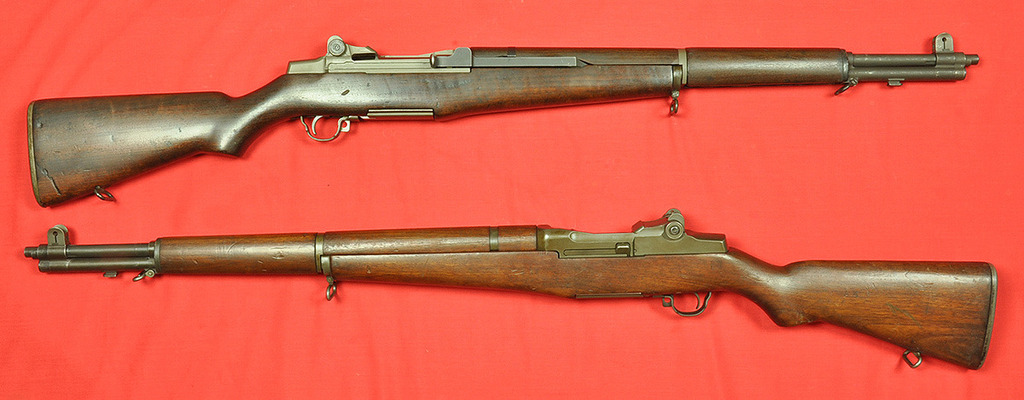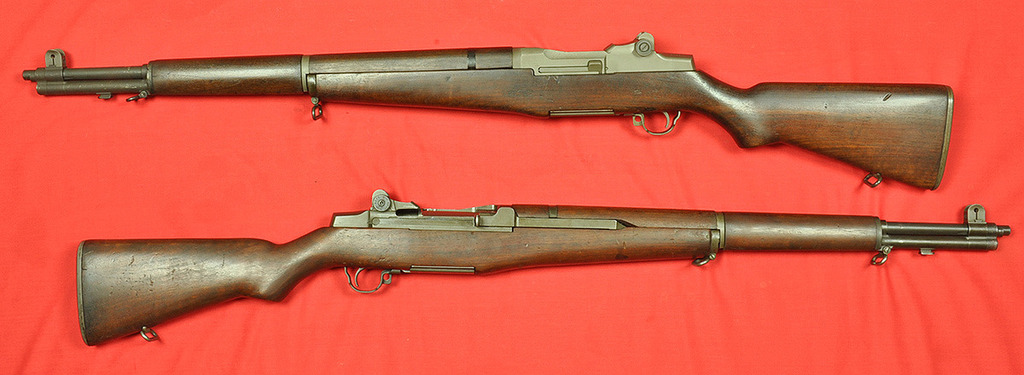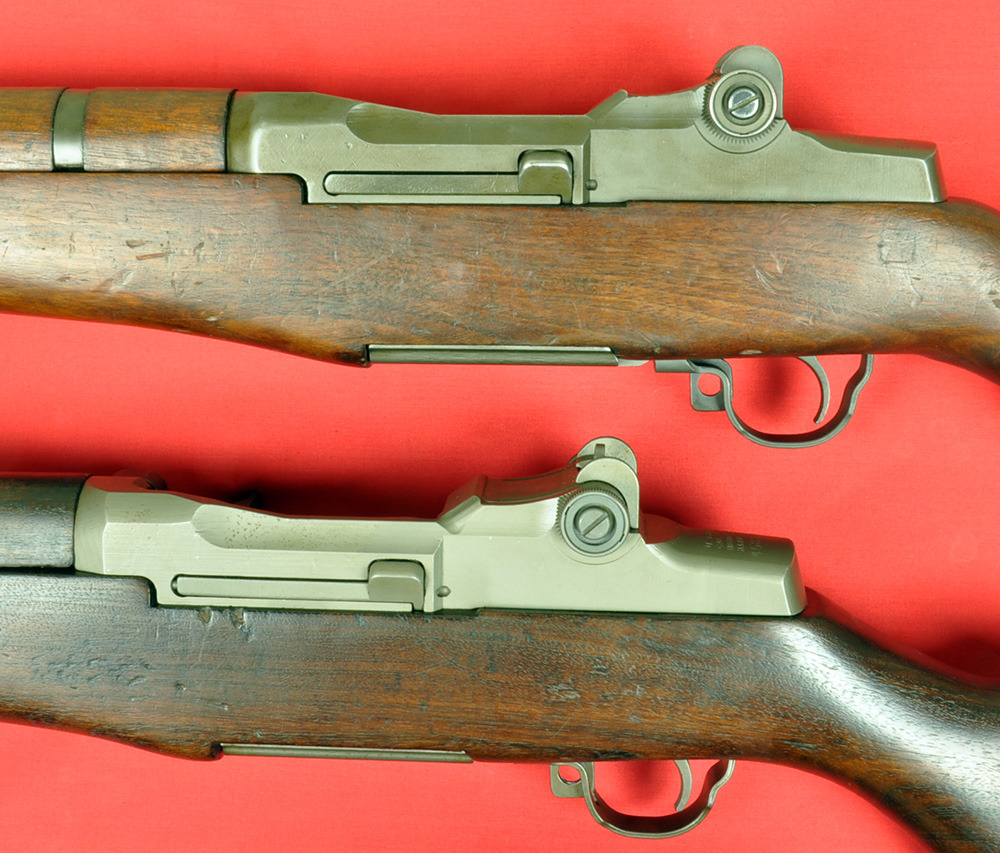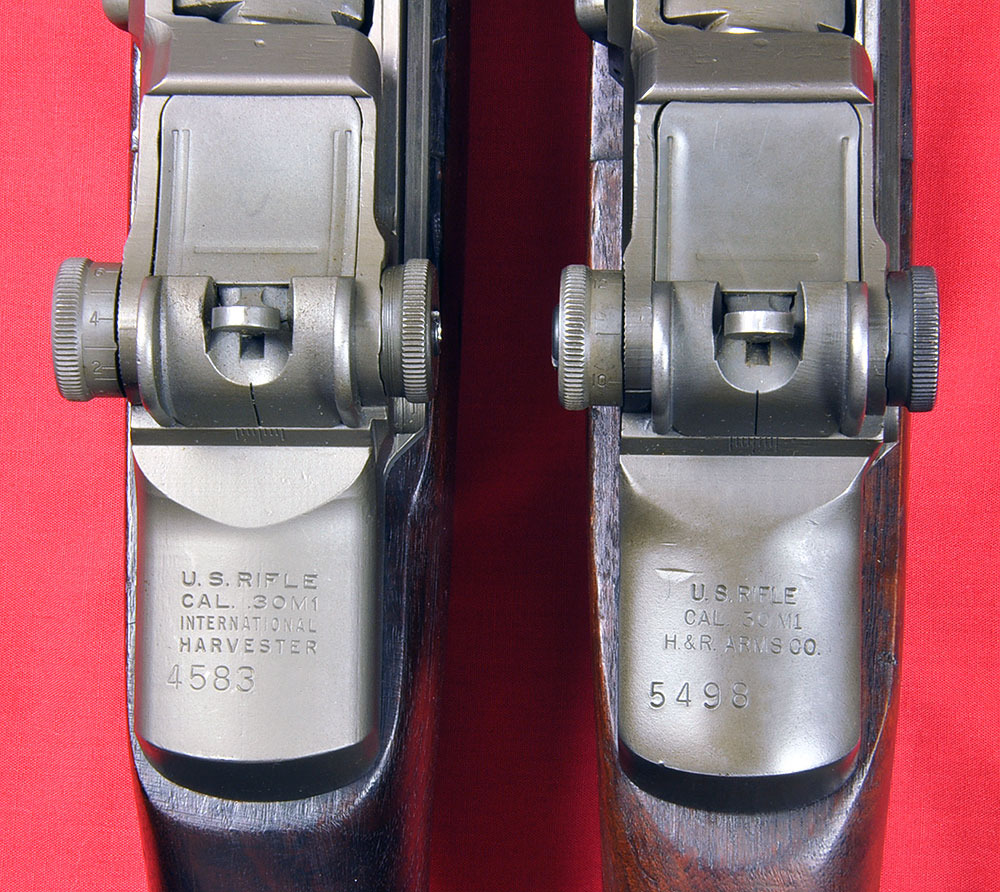It took me a while to get around to posting these pics; this is a pair of M1 Garands rebuilt at the Letterkenny Army Depot (LEAD) in Pennsylvania in the 1960s. The top one in the first two pics is an International Harvester production, and the bottom one is a Harrington & Richardson issue. The IHC sports the lightest shade of the typical LEAD silvery finish I've ever seen, but the pics don't do it justice. It was refinished in a fresh batch of parkerizing solution - as more rifles were dipped in the solution, and the more contaminants were introduced, the solution and the rifles became darker. The HRA either got a dip in a very old and weak solution, or else it was not refinished, as it's still a darker shade of gray with a touch of olive. Both rifles have rear sight knobs darker than the receiver finish, which also was typical of LEAD rebuilds. Both rifles also are LEAD marked on the receiver leg, and both are still wearing correct stocks, respectively. The IHC is an earlier "postage stamp" example, while the HRA has a serial number in an uncommon block (Springfield having been assigned all but about 11,500 of the 5.4M block).


The IHC is on the bottom in this next pic; you can see better the difference in metal coloration.




The IHC is on the bottom in this next pic; you can see better the difference in metal coloration.












